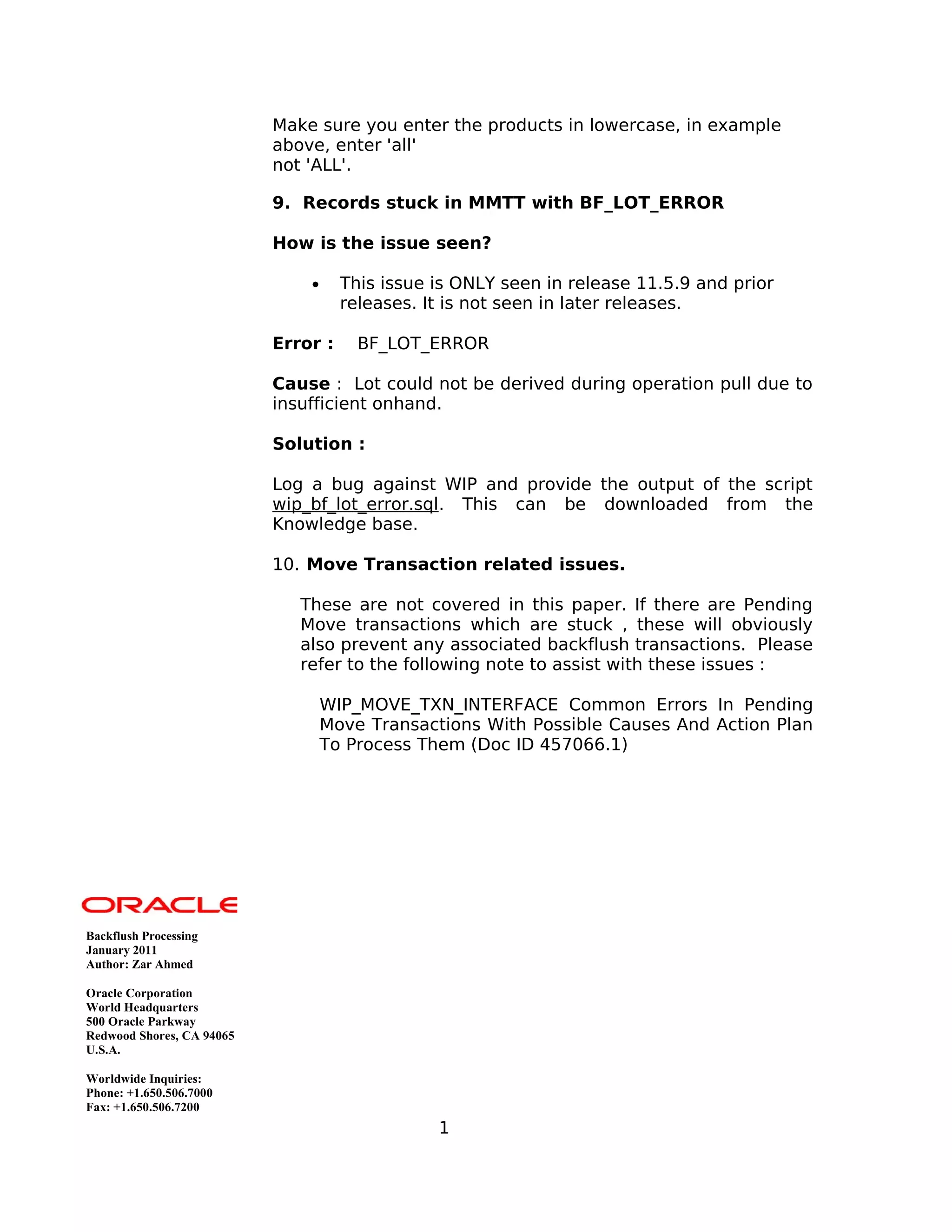This document provides an overview of backflush processing in Oracle Work in Process. It defines backflushing as automatically reducing component quantities from inventory when assemblies or operations are completed. It discusses the six processes that can trigger backflush transactions: 1) completing assemblies at operations, 2) moving and completing assemblies into inventory, 3) completing assemblies into inventory, 4) receiving assemblies from outside processing, 5) importing move transactions, and 6) importing inventory transactions. For each process, it explains when backflush transactions occur and which component supply types are backflushed.

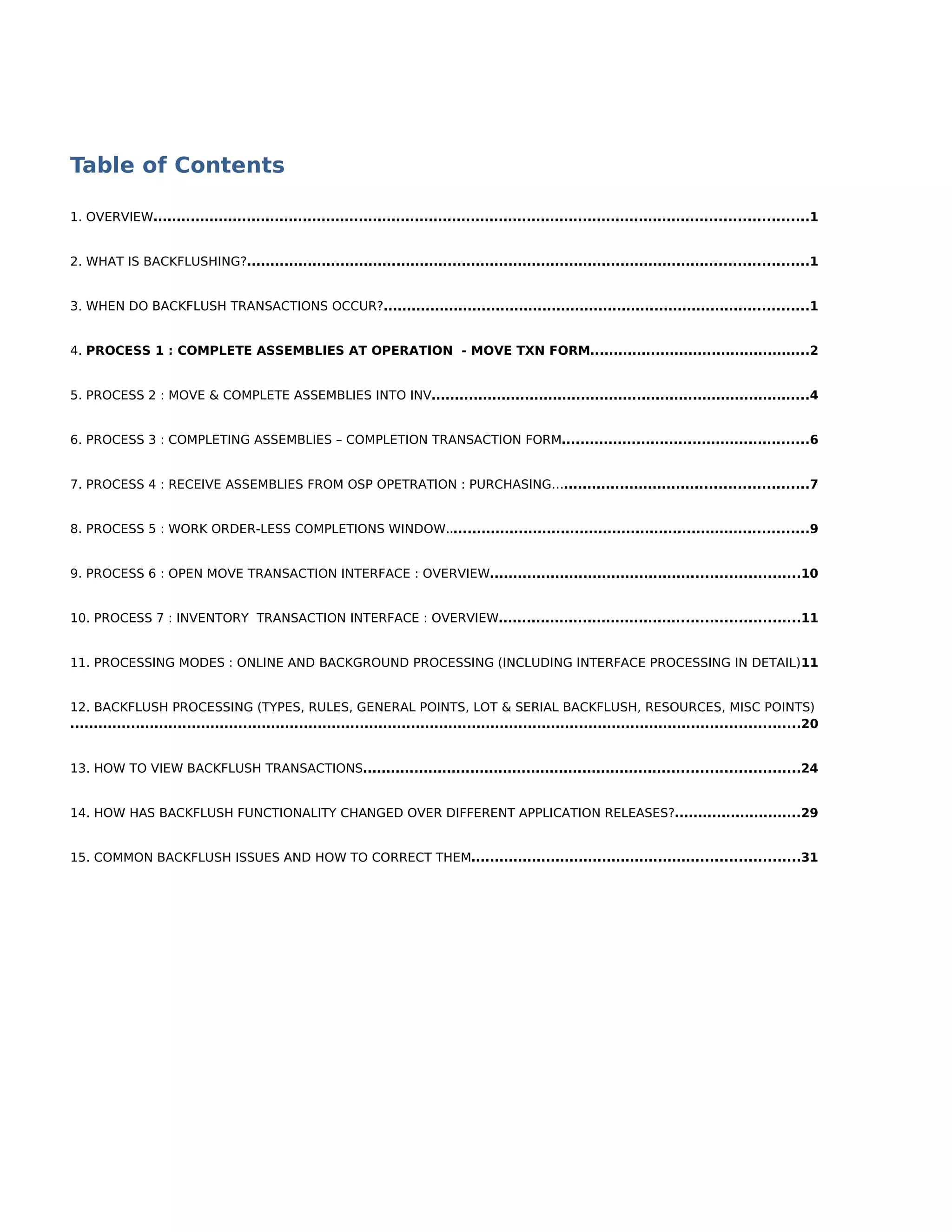

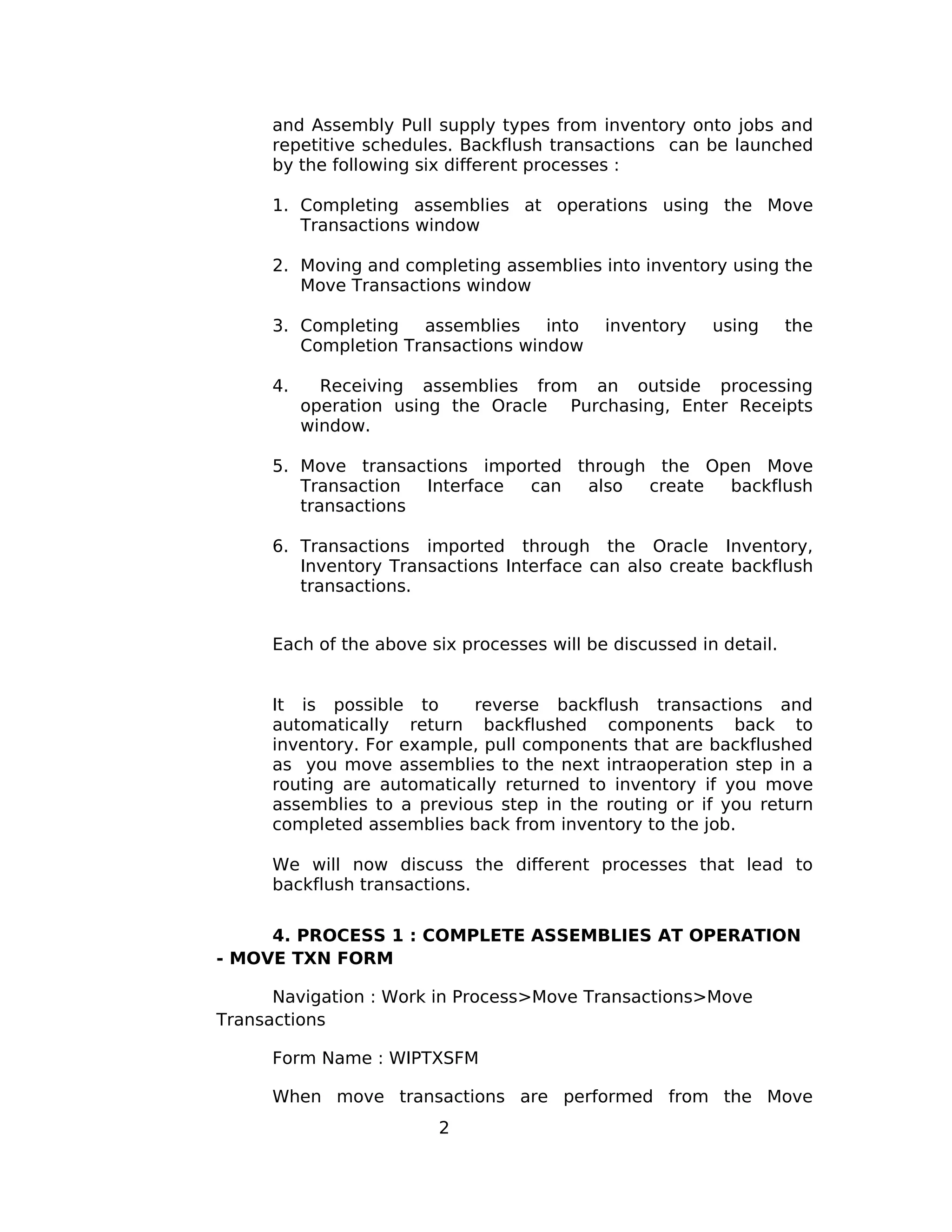

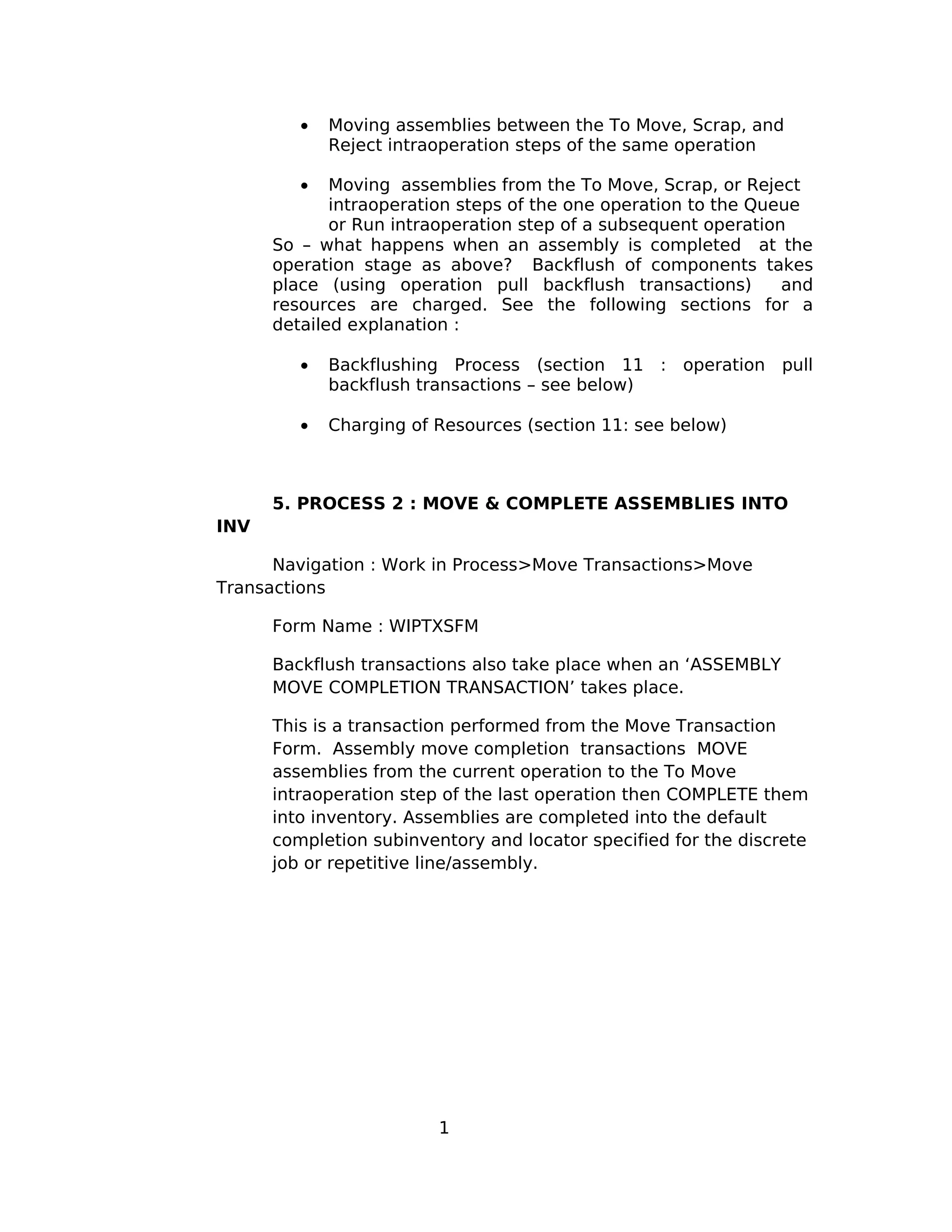

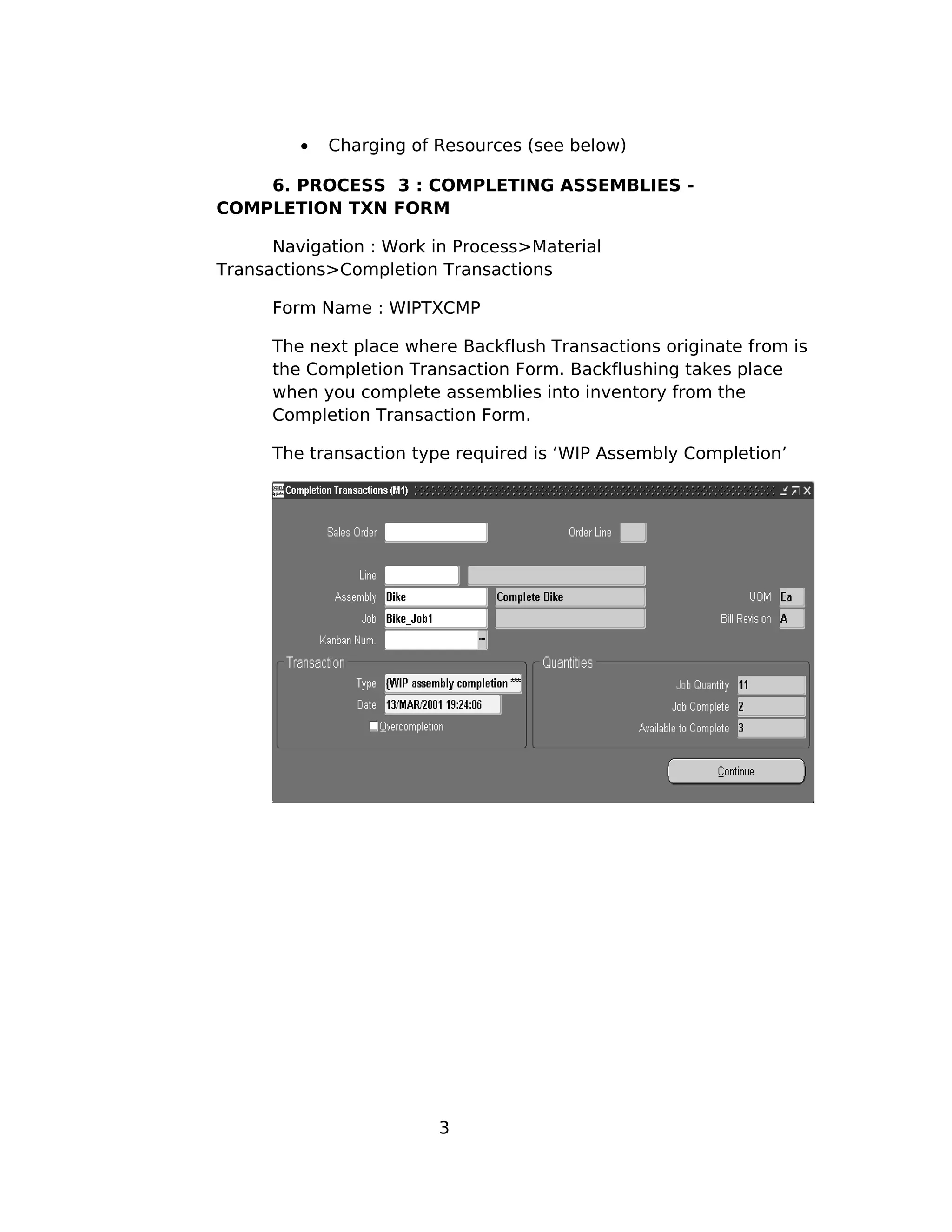
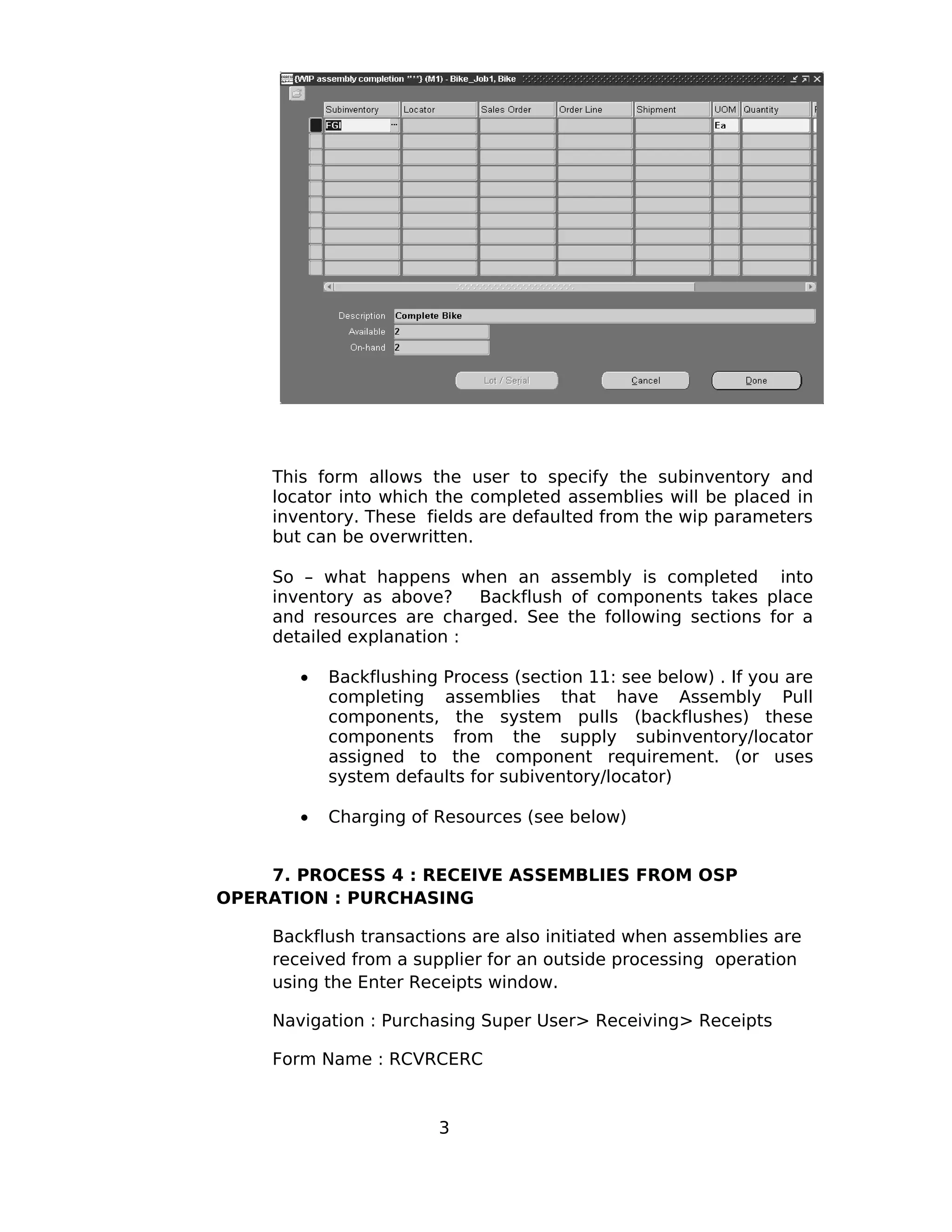

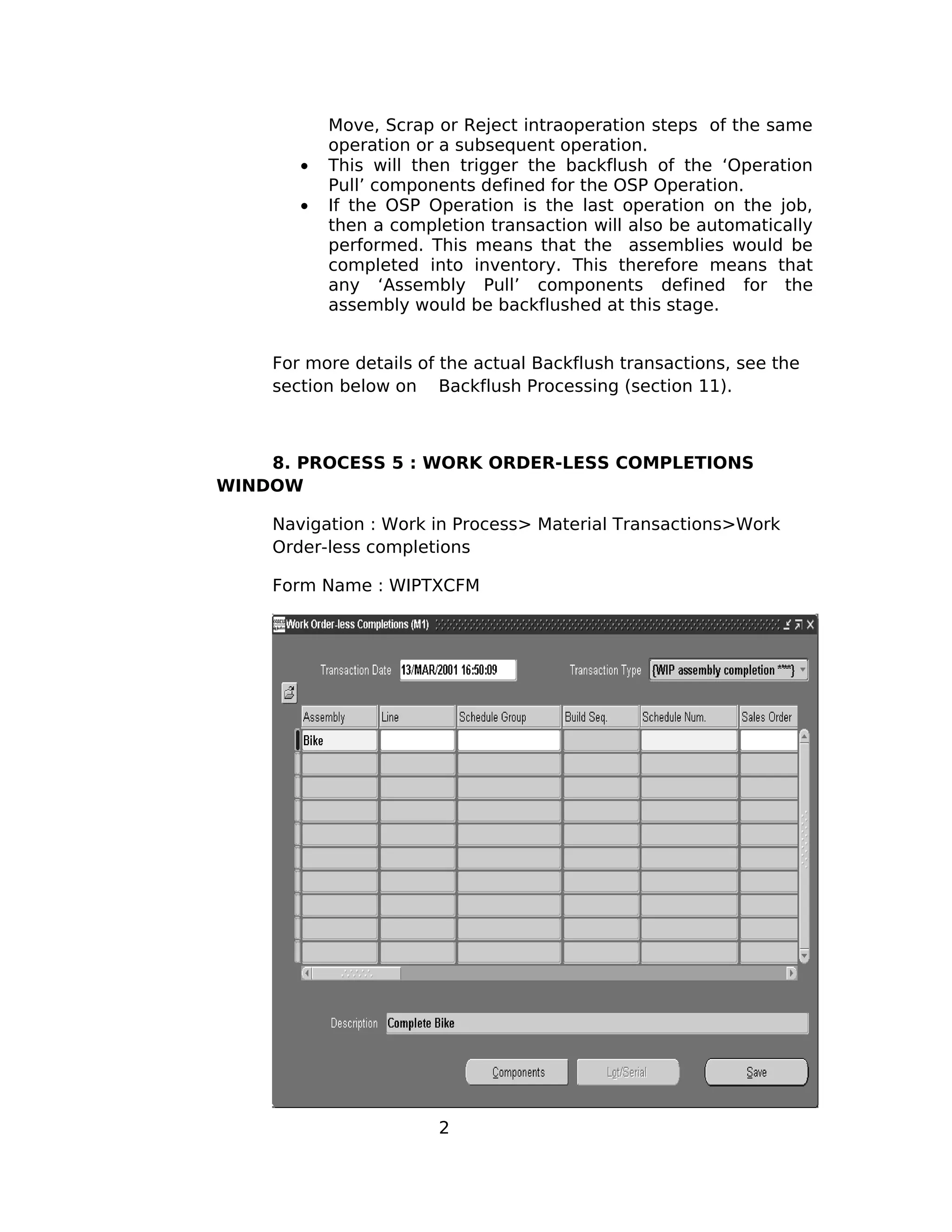
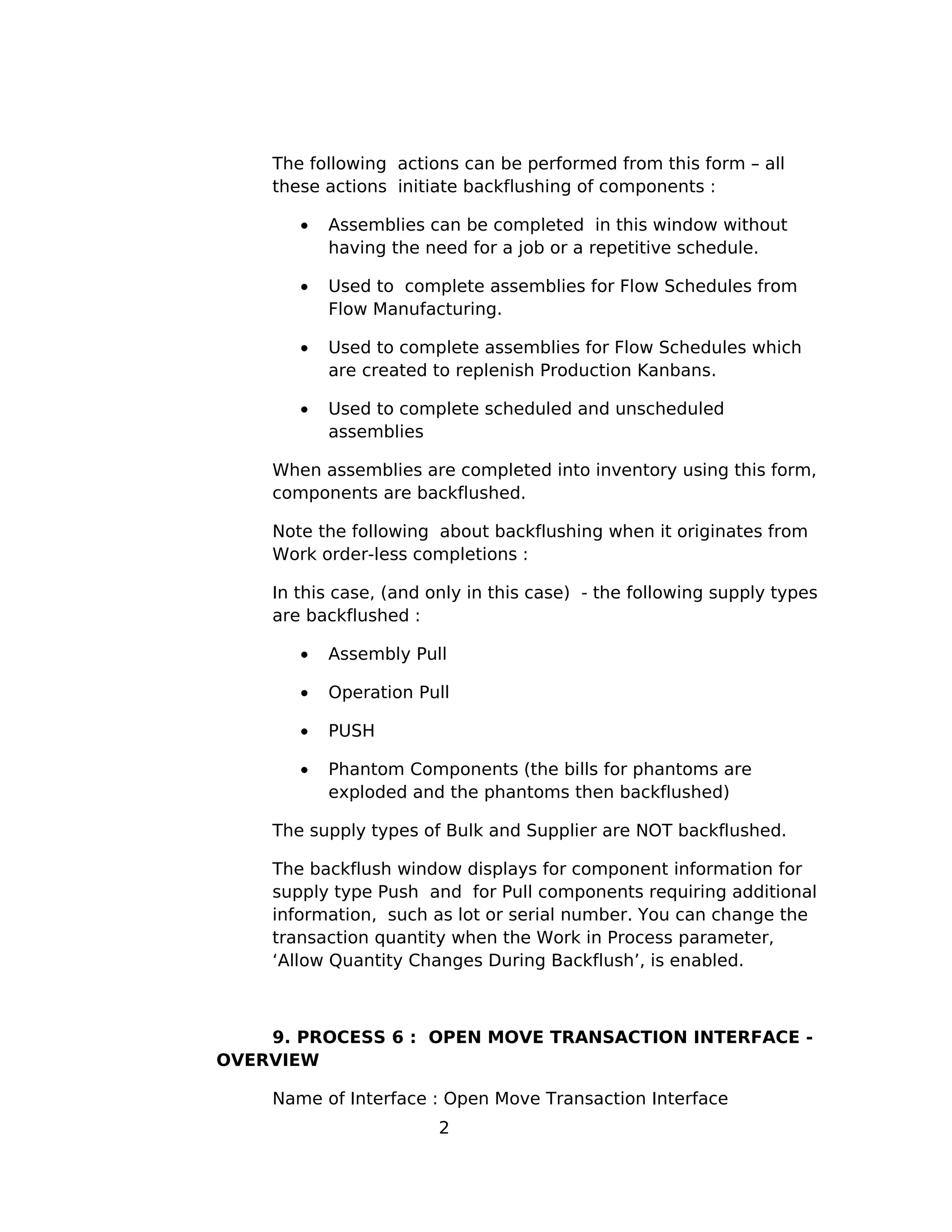
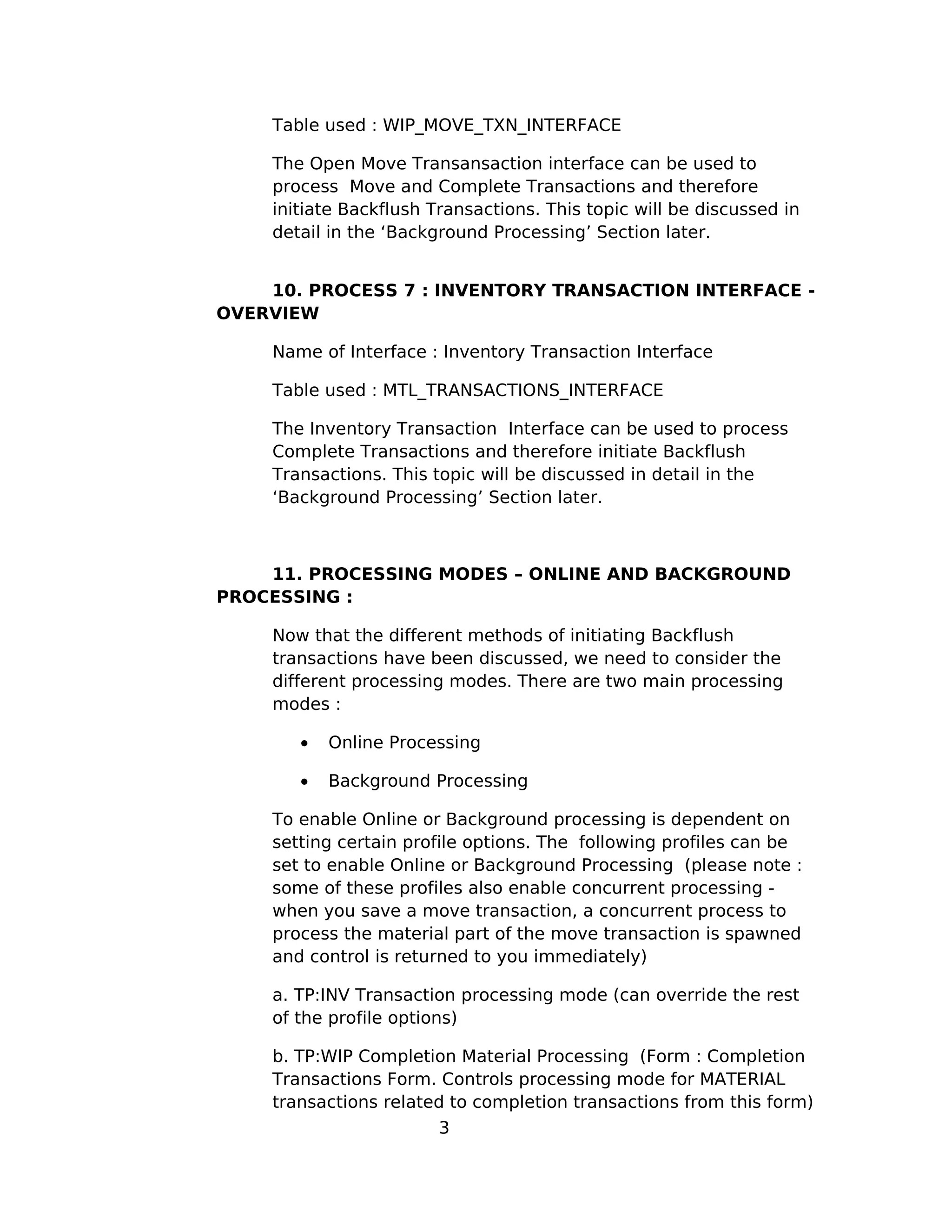
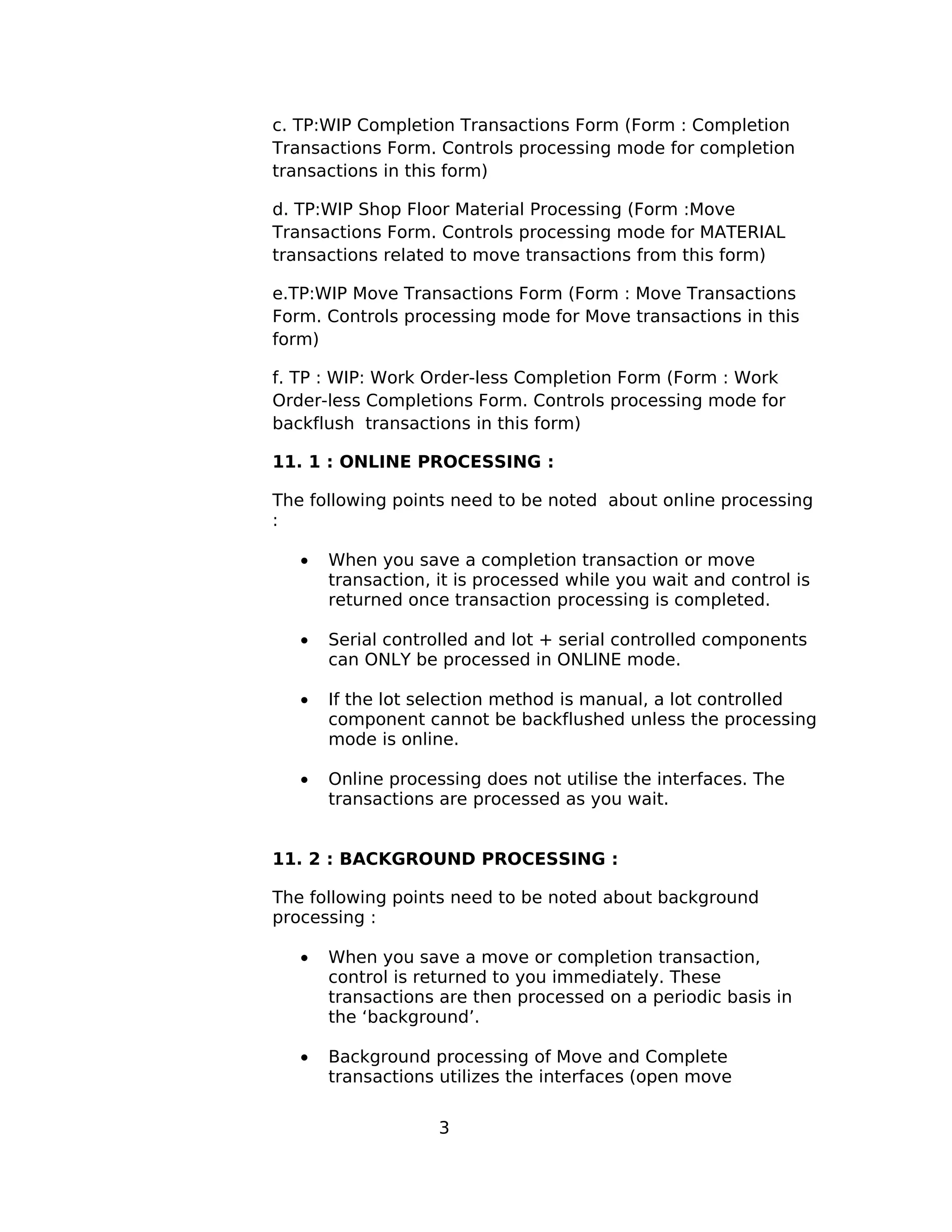
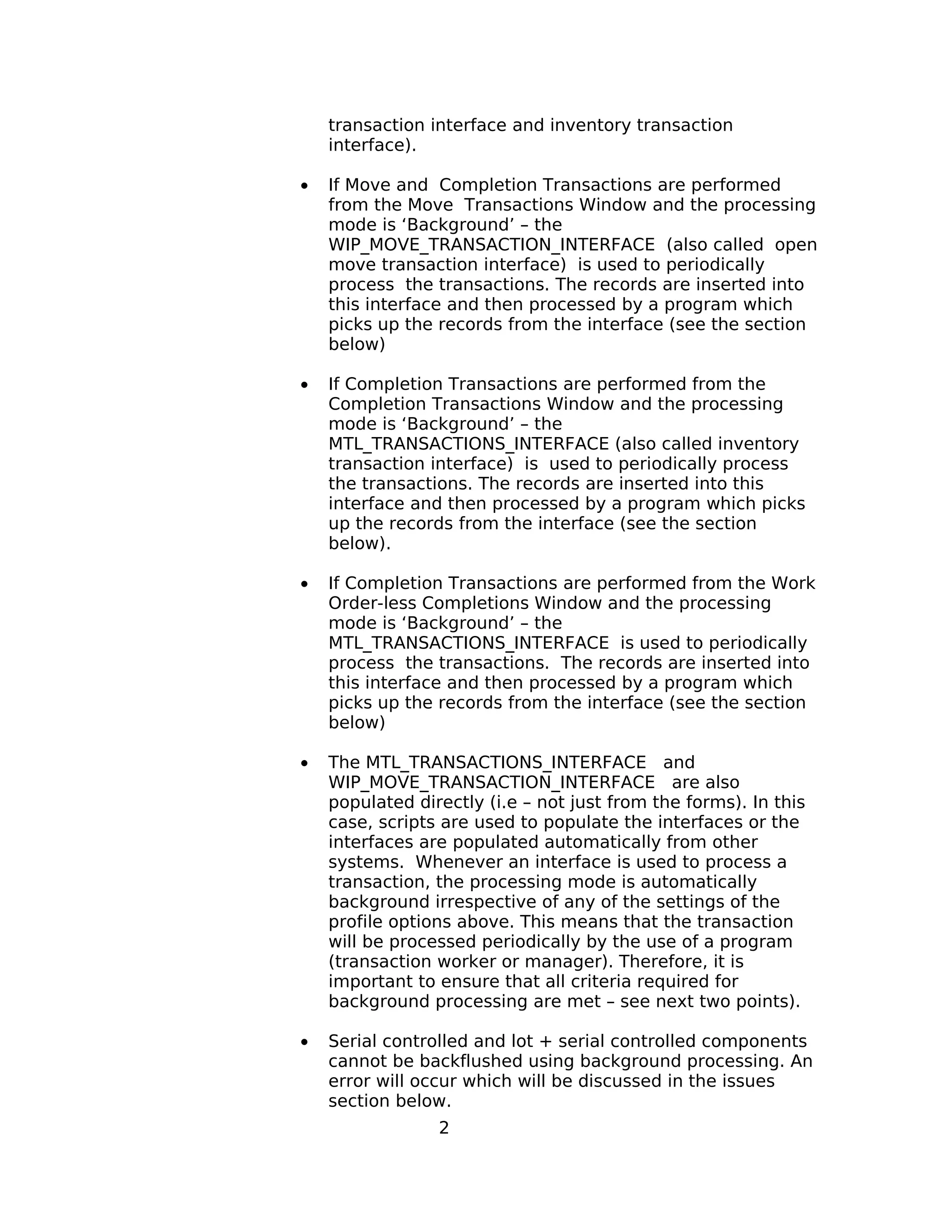
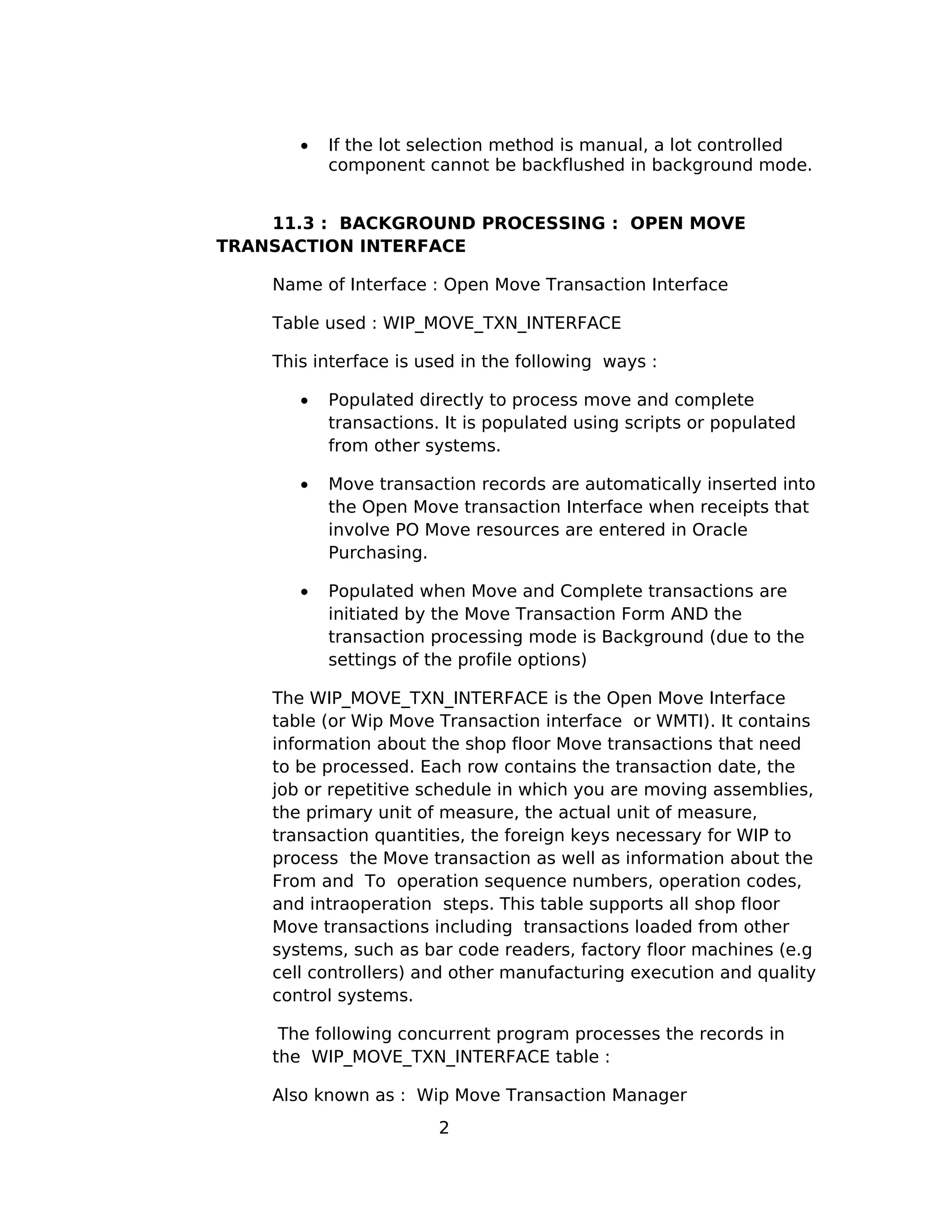
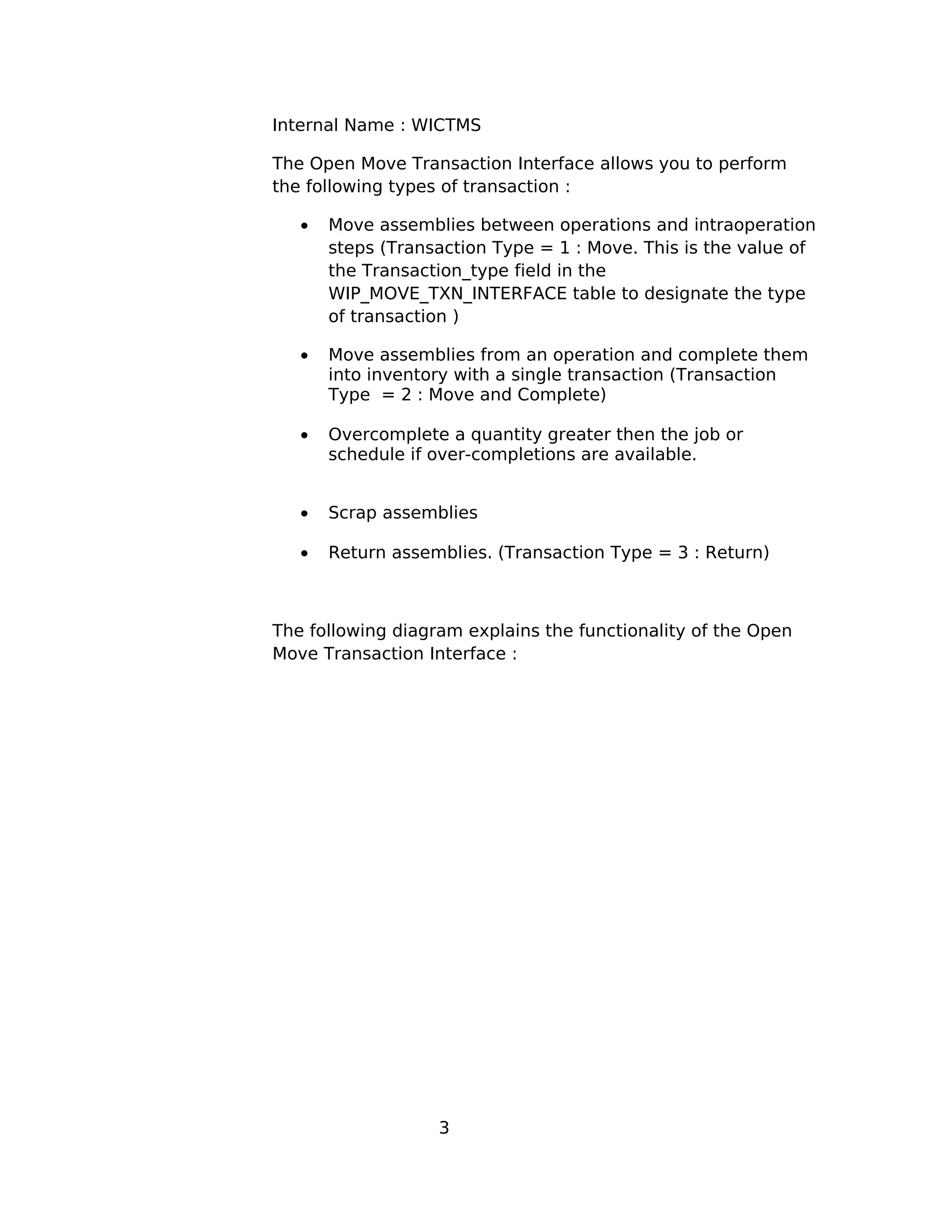
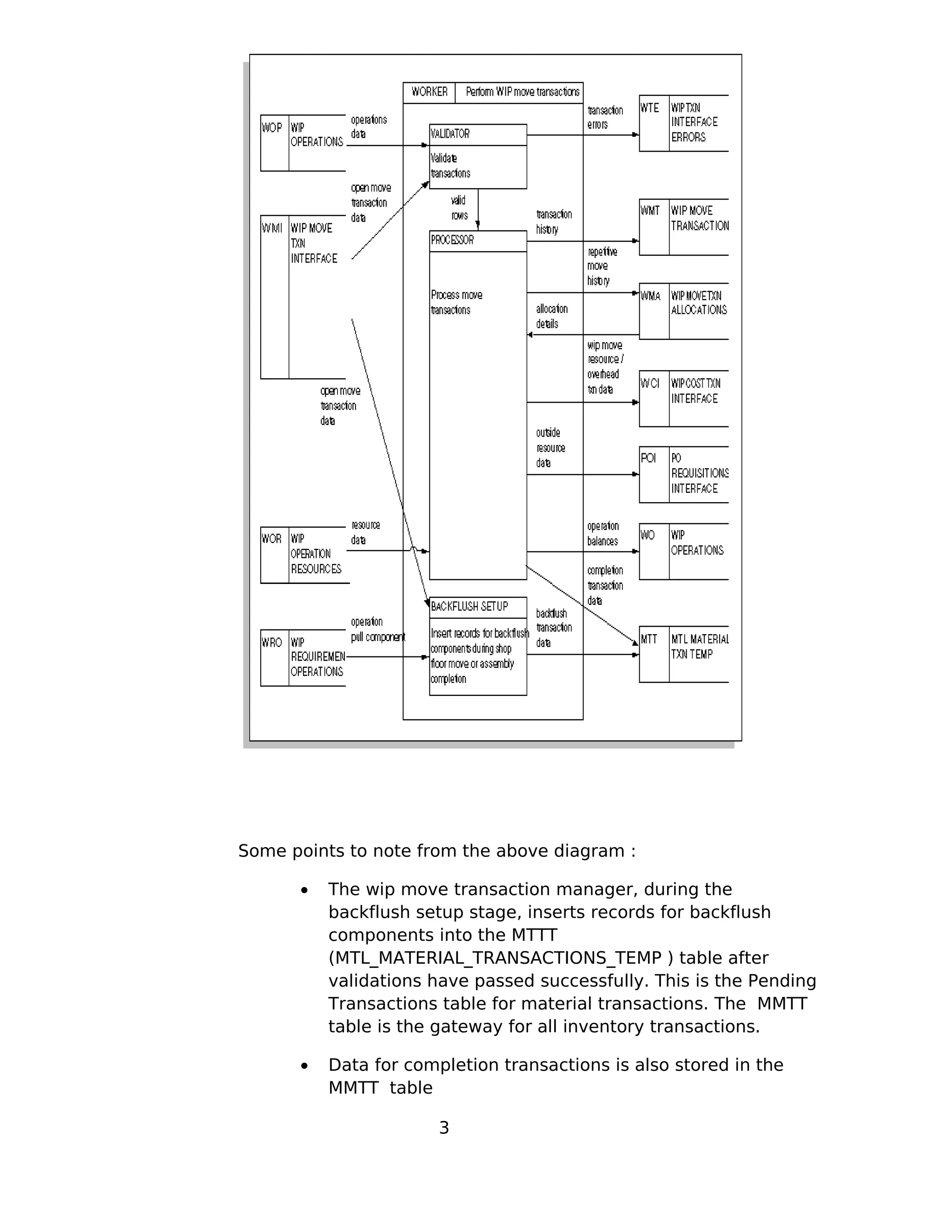

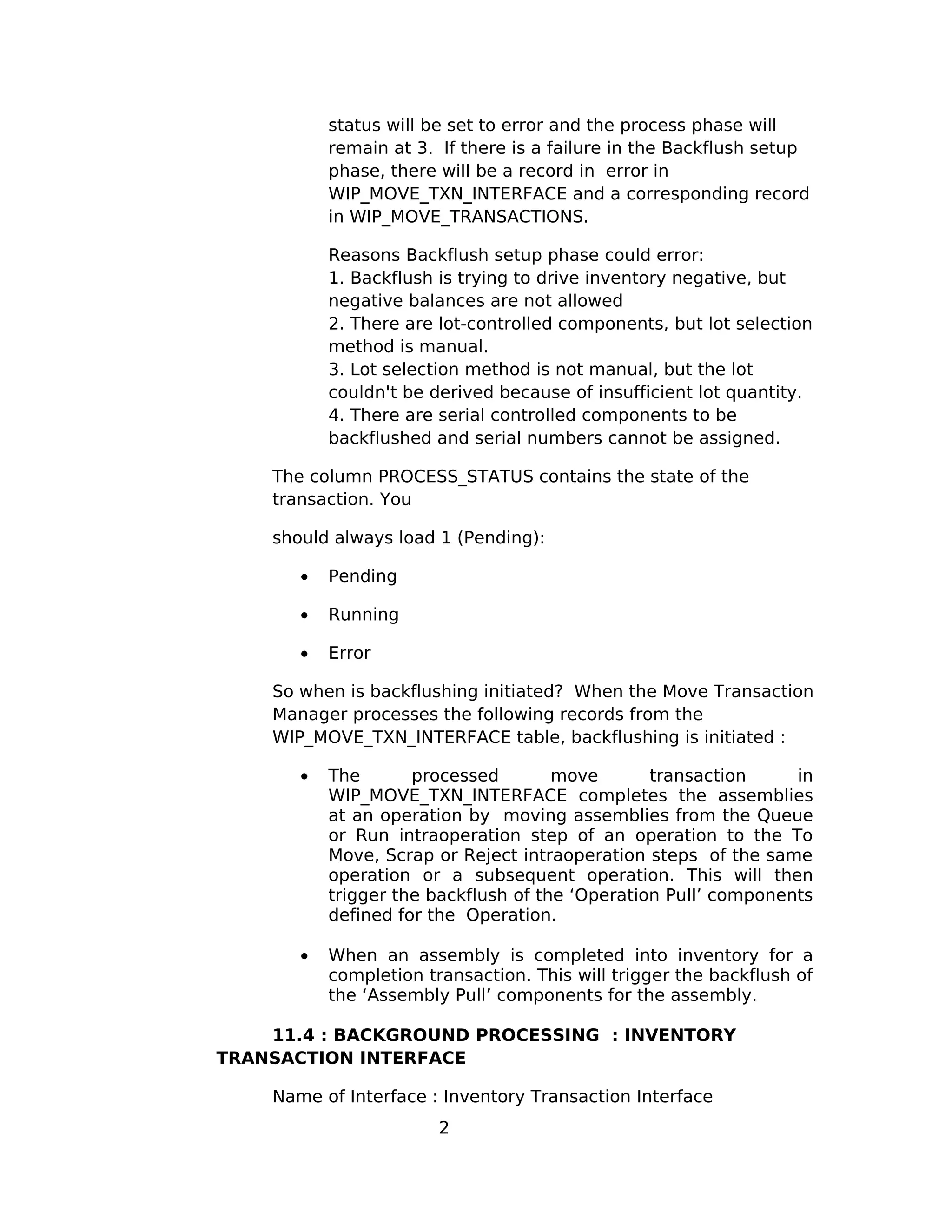
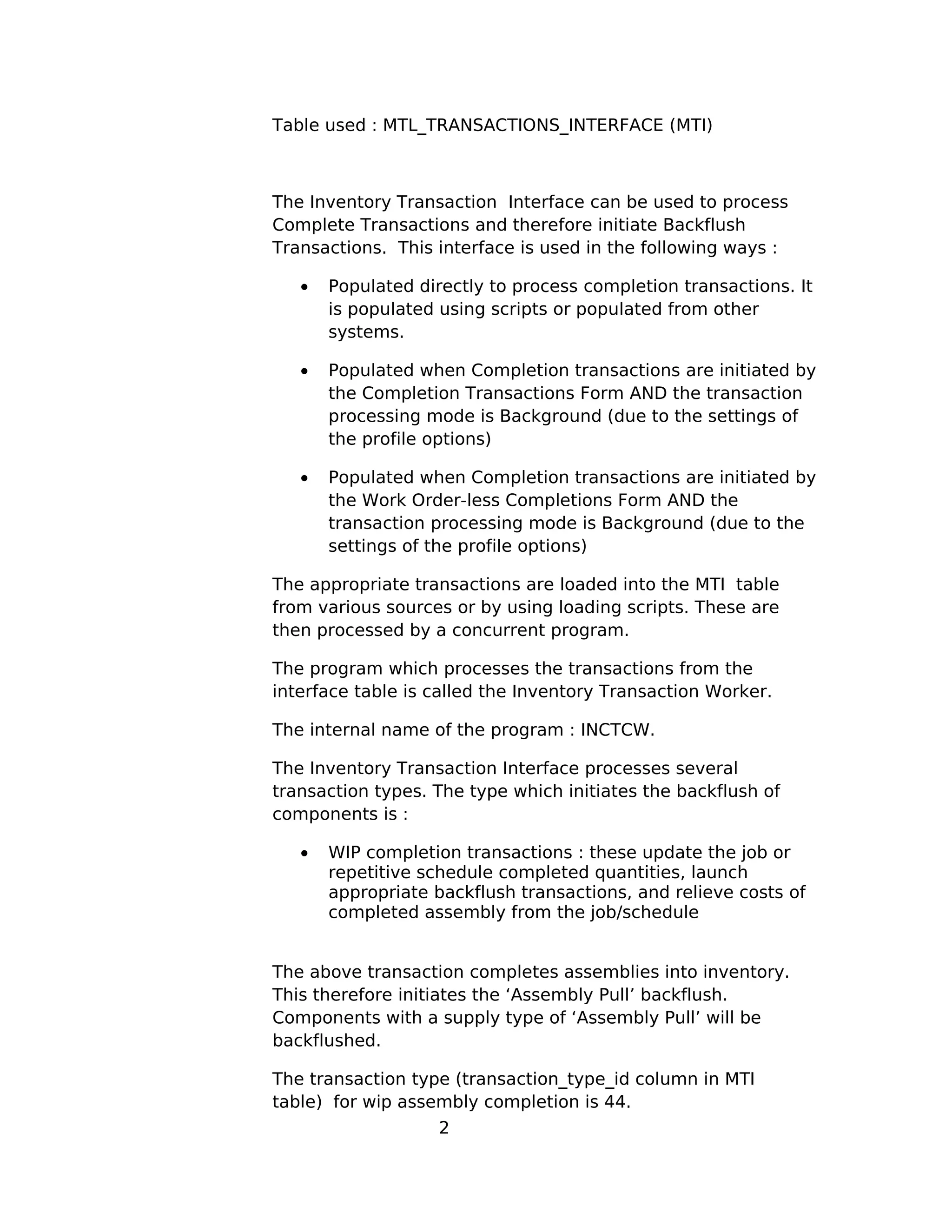
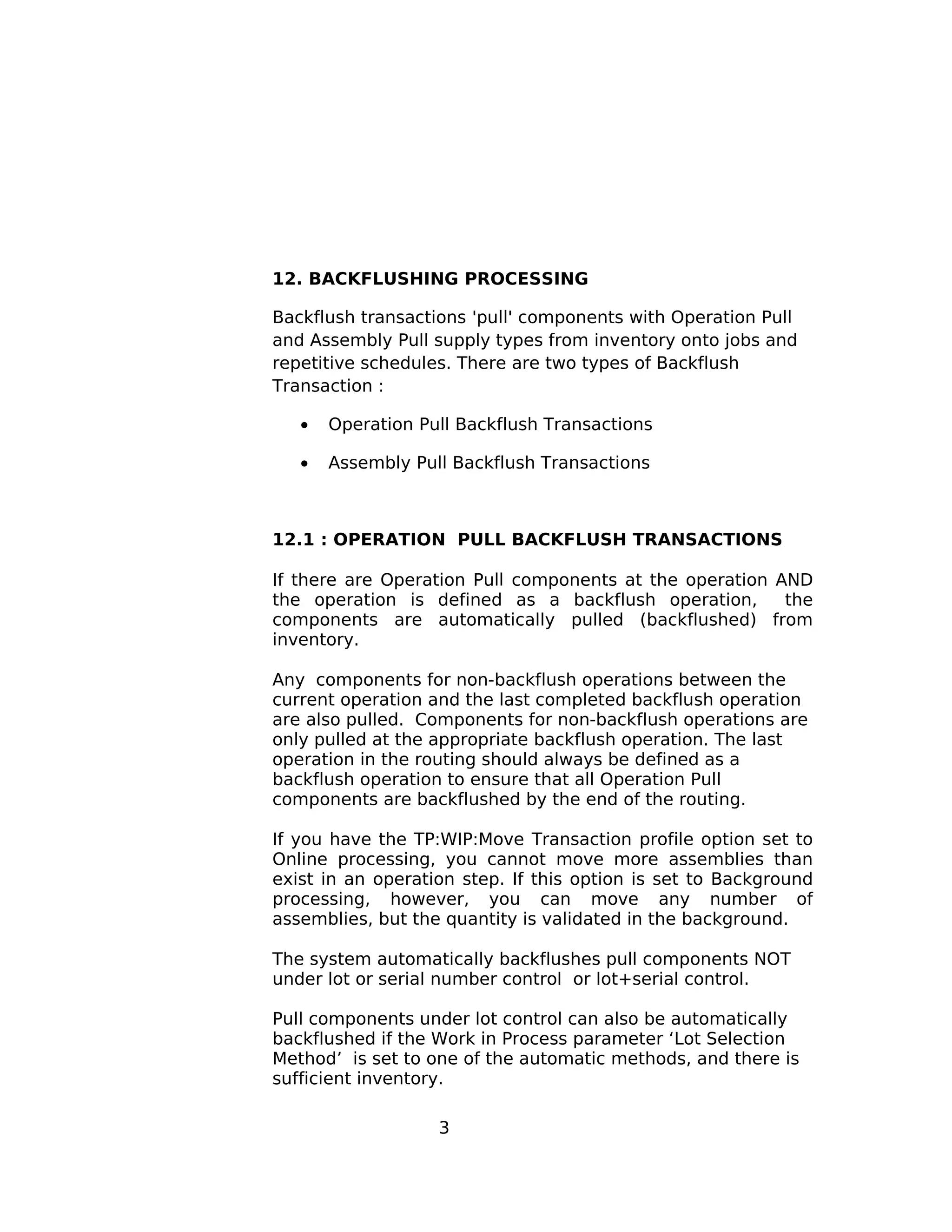
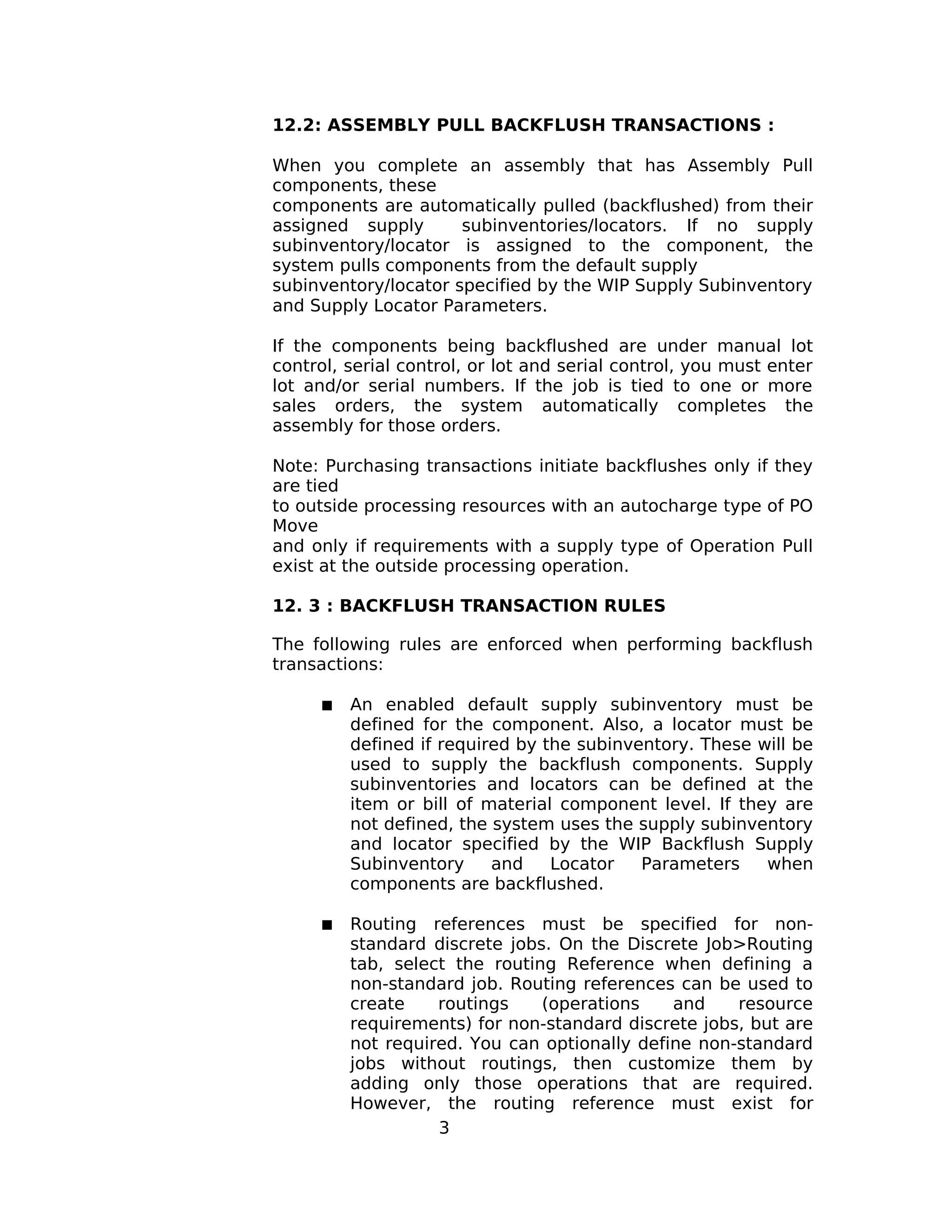
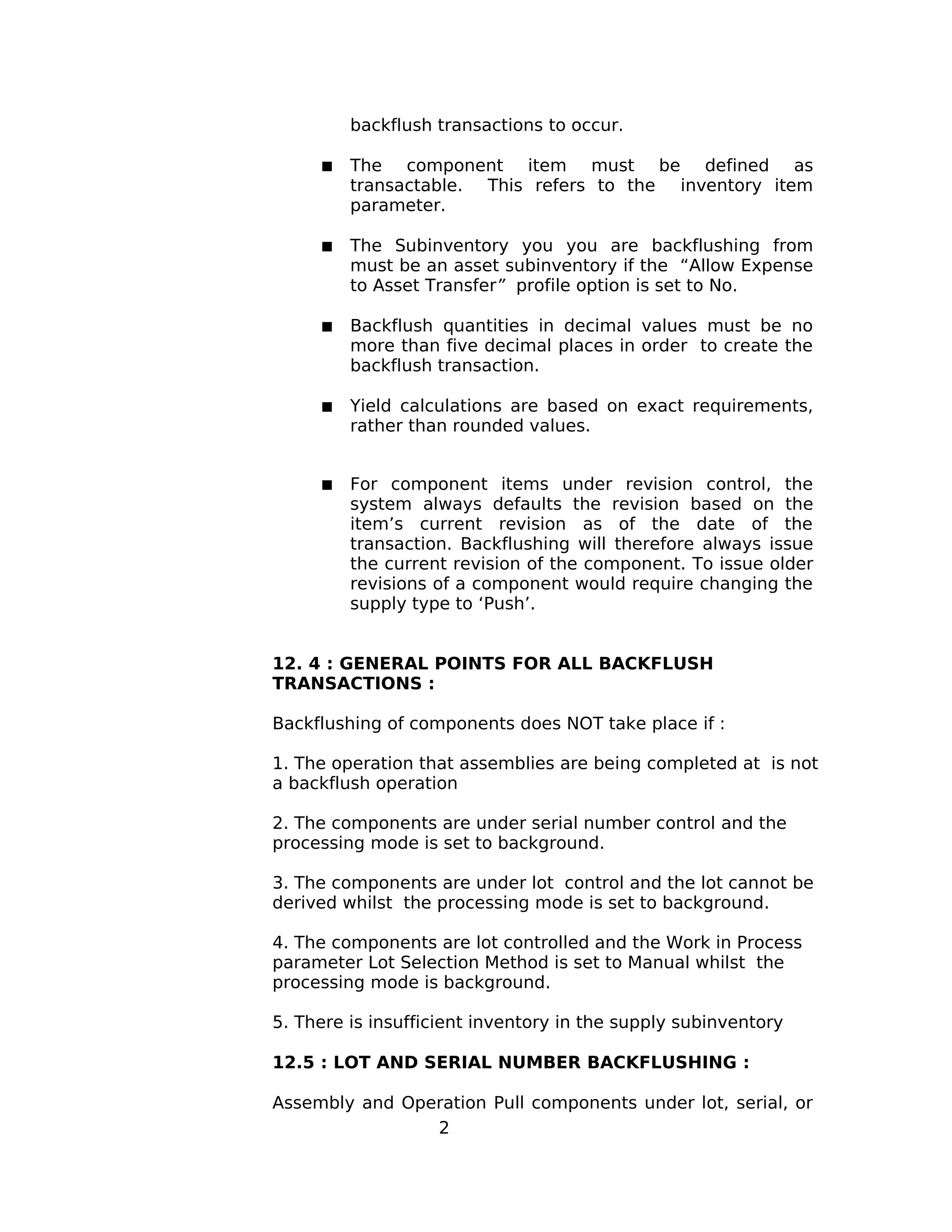
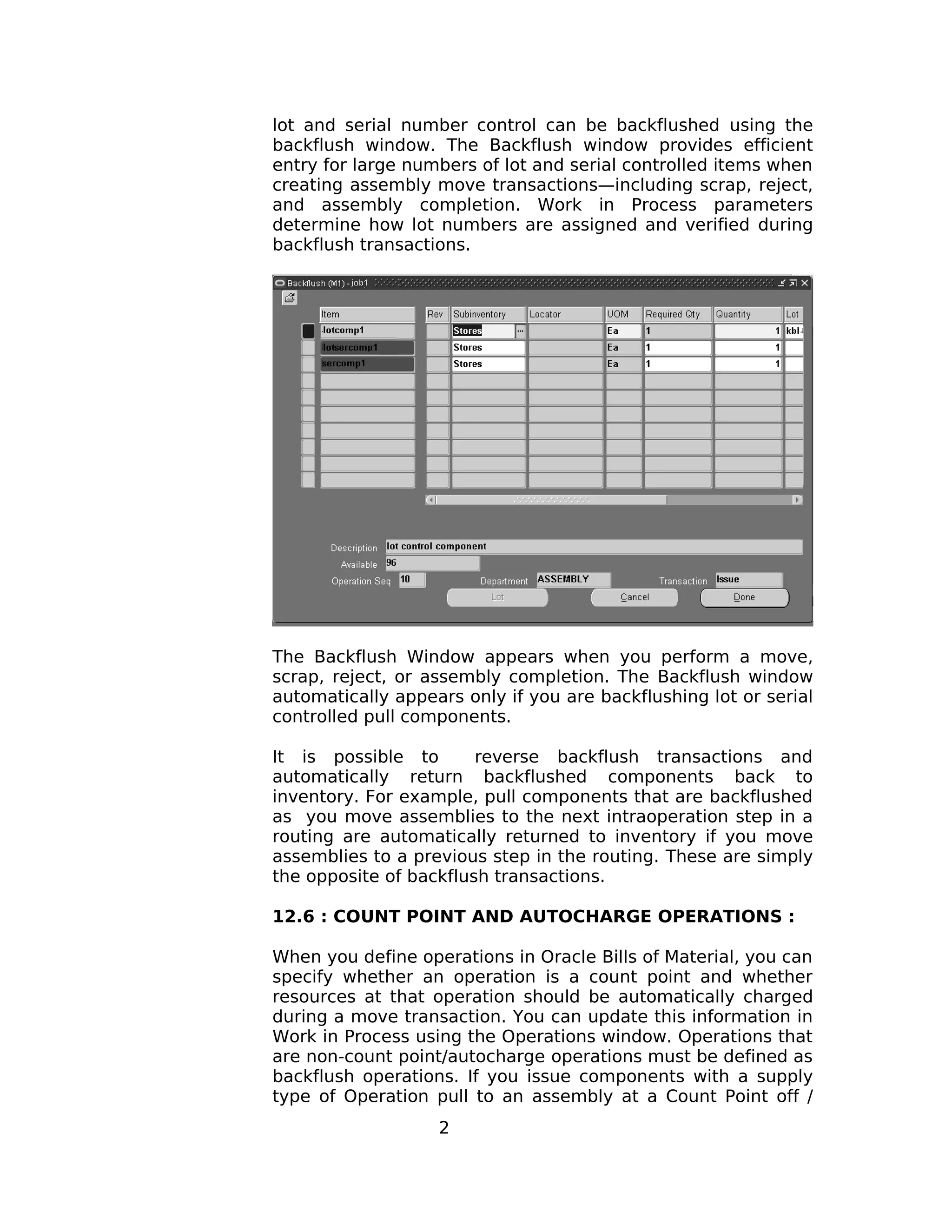
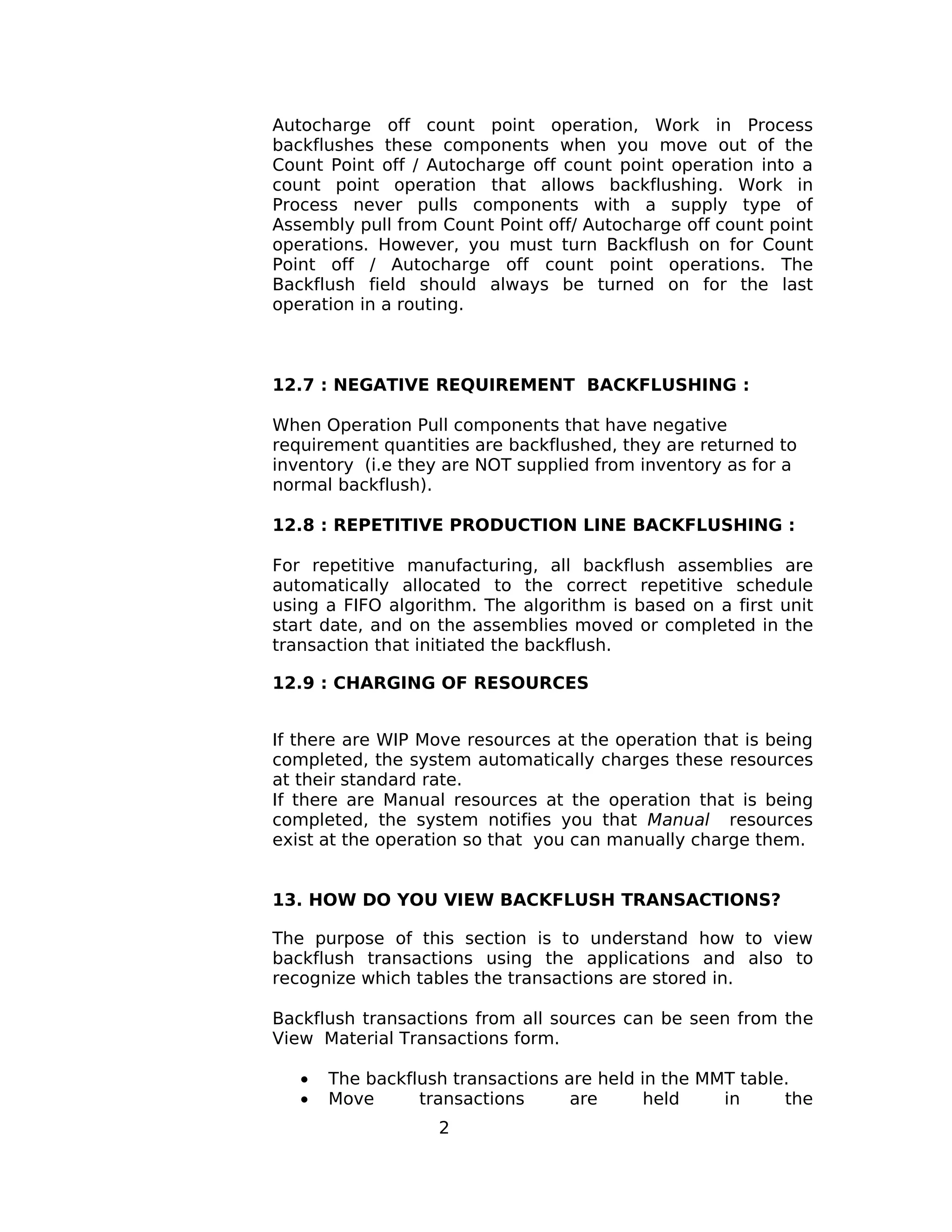
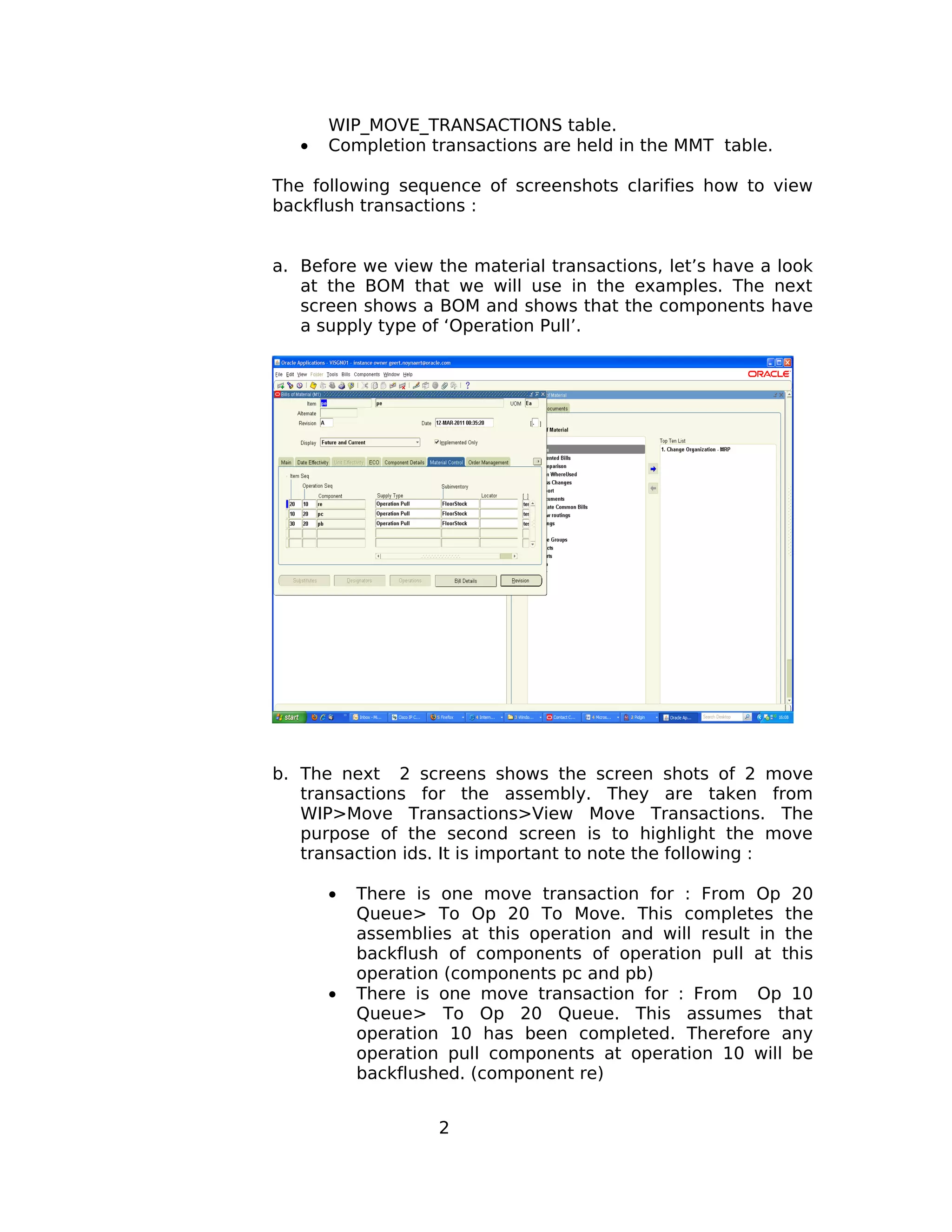

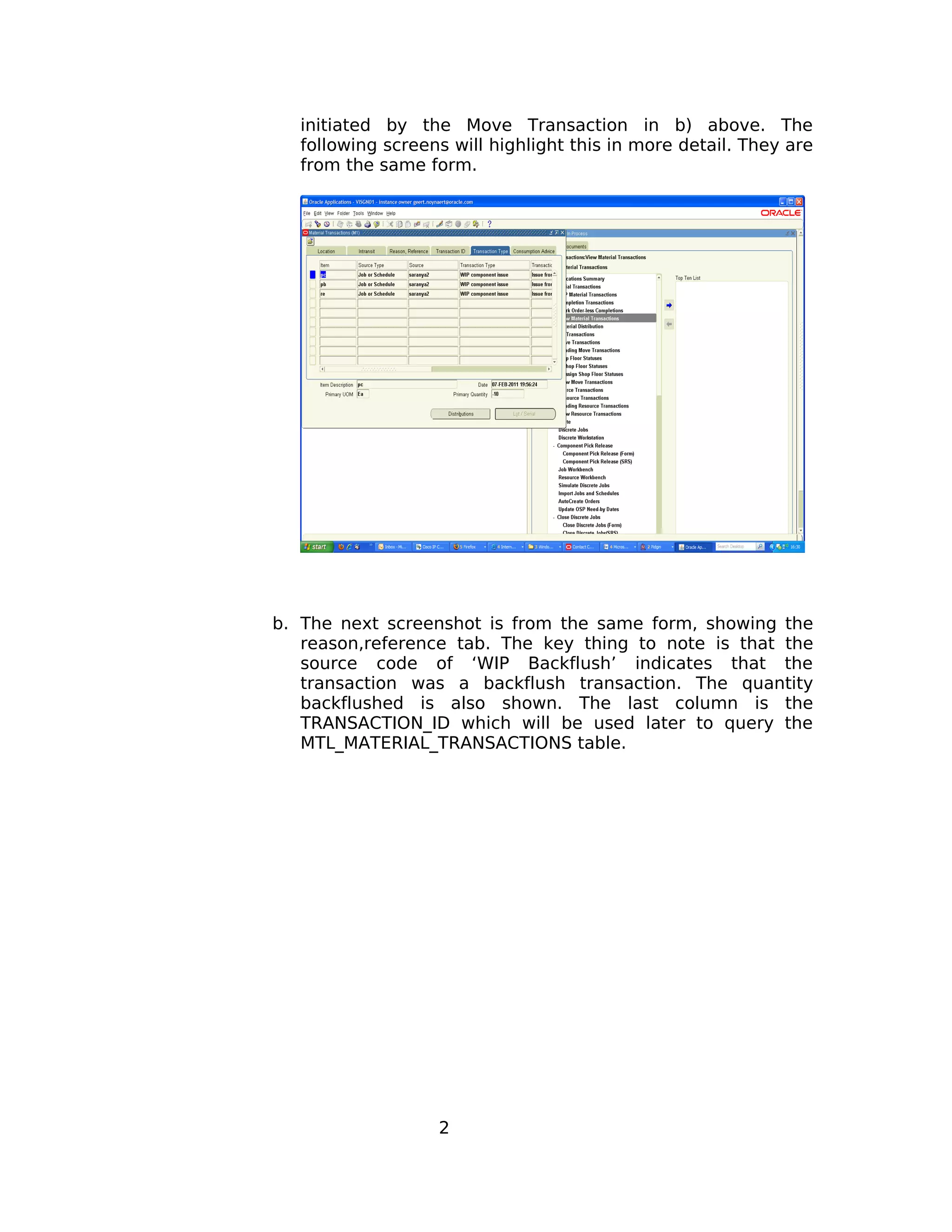
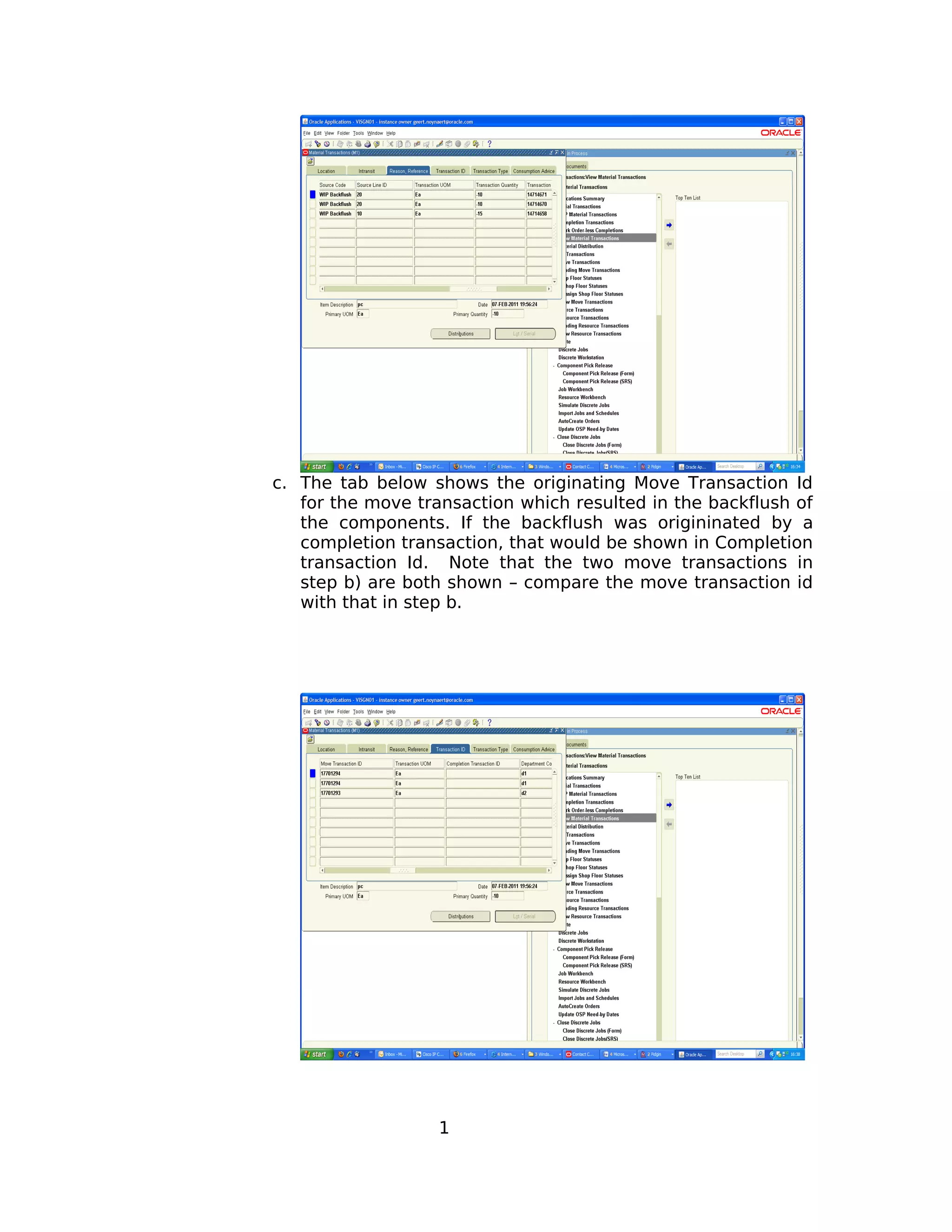
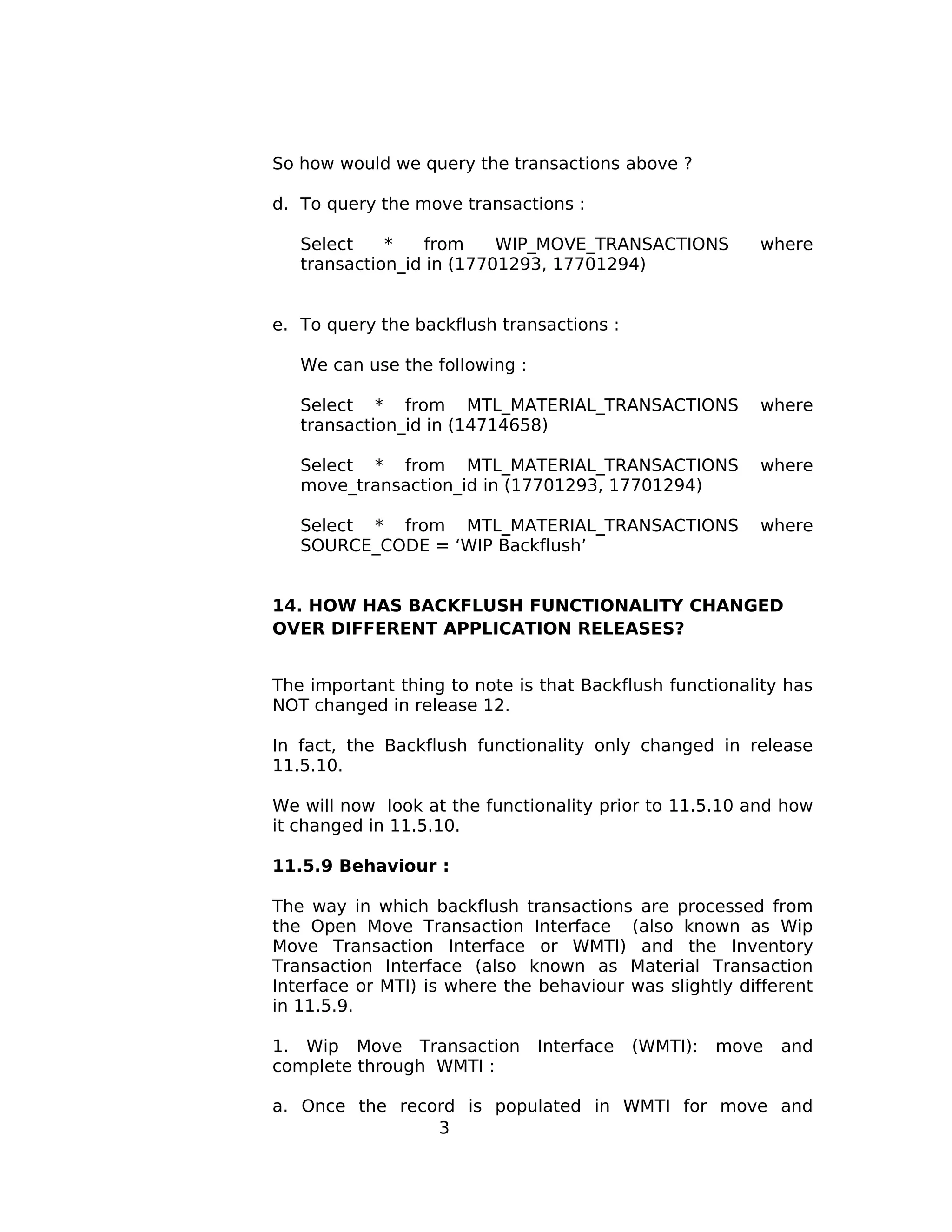
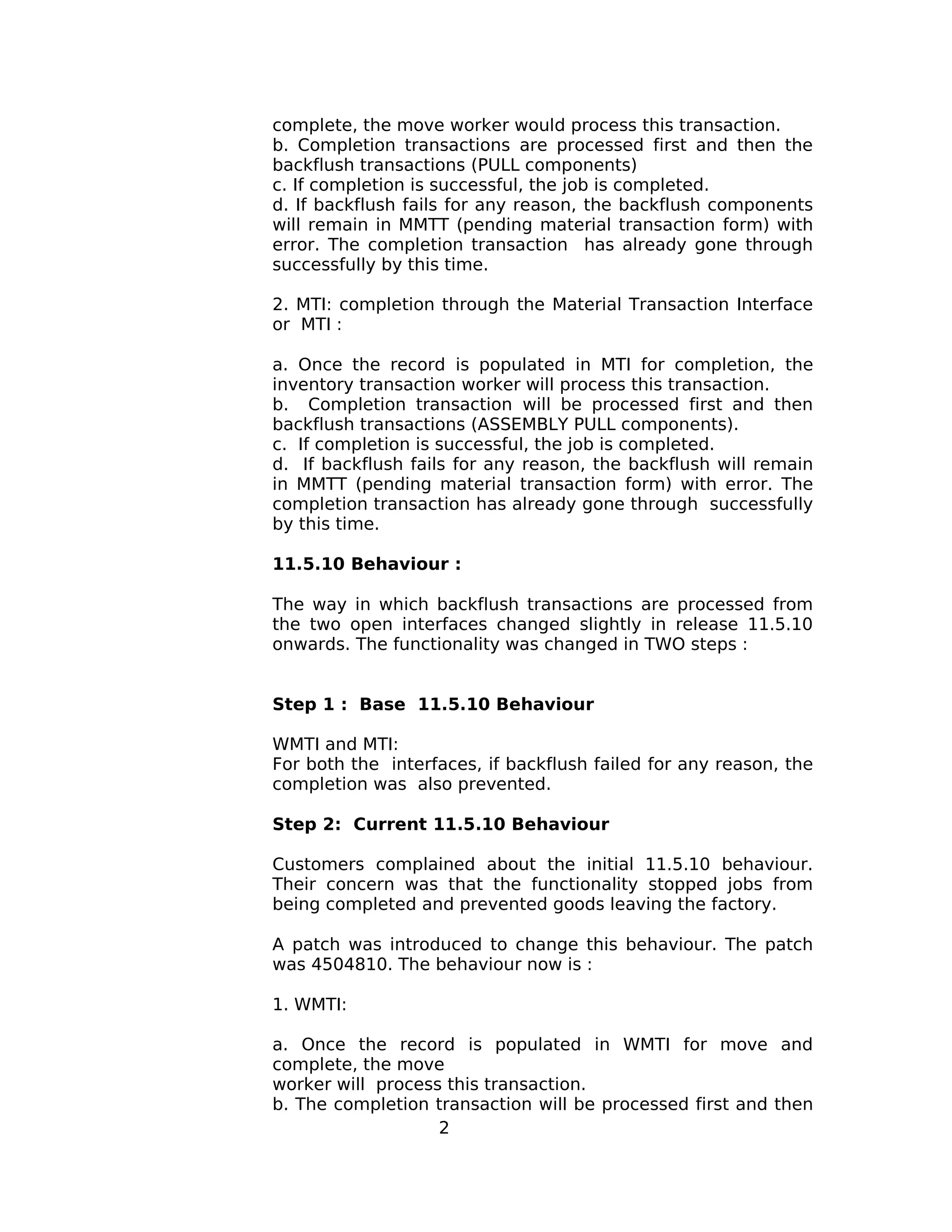



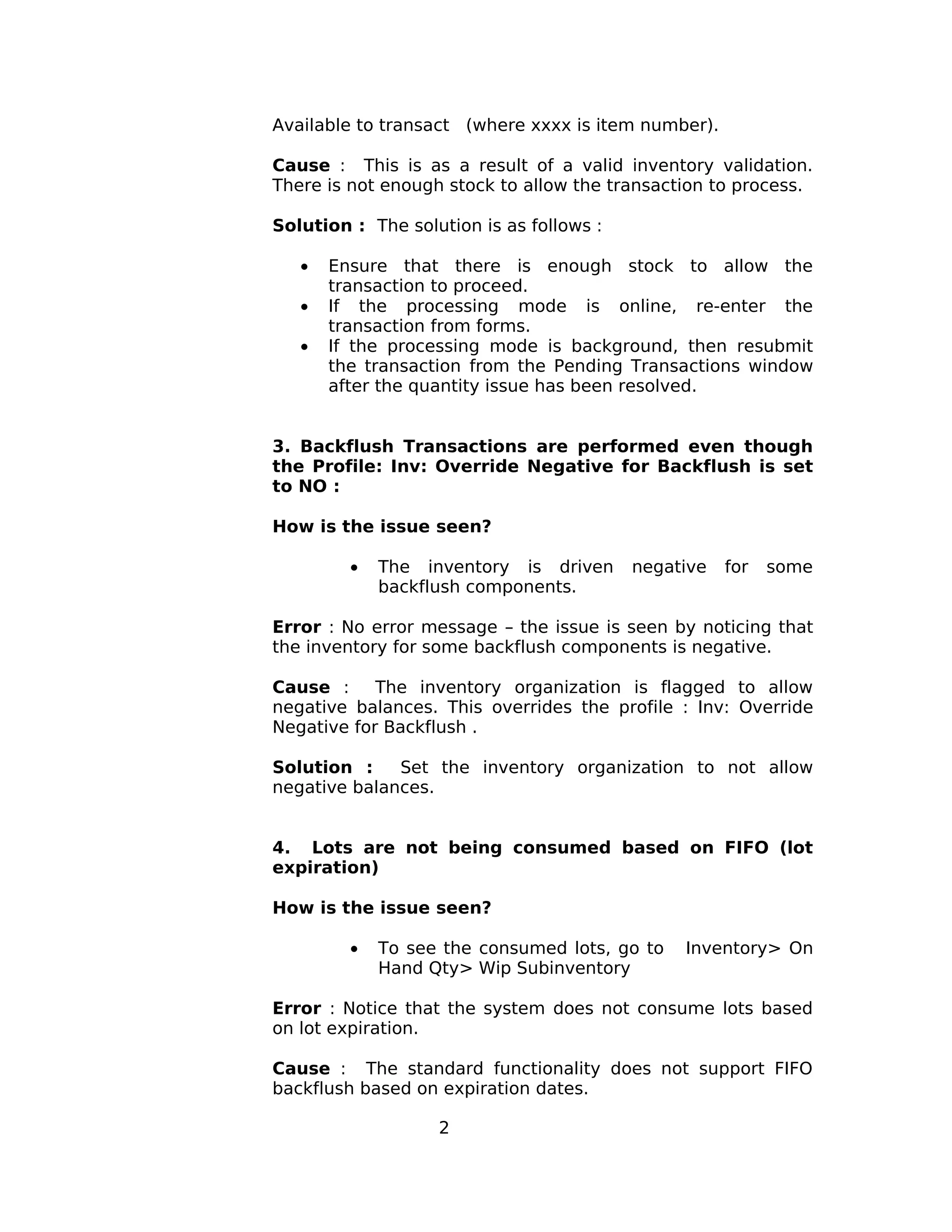


![8. Intermittent Wip Move Errors at Backflush Setup
stage
How is the issue seen?
• When this WIP Backflush error occurs, the discrete job
remains in Released Status at the last operation step
and no material is issued to it. There is also an
Inventory Pending transaction for the WIP Completion
that gets stuck in the interface with status Pending.
Error : The WIP work order associated with this transaction
is currently locked and being updated by another user. Please
wait for a few seconds and try again. Transaction processor
error
Cause : Possible file corruption
Solution :
1. Identify who locked the WIP or INV table using the query
below :
select
ORACLE_USERNAME,OS_USER_NAME,OBJECT_NAME,locked_m
ode,session_id,c.serial#
from all_objects a ,sys.V_$LOCKED_OBJECT b,v$session c
where a.OBJECT_ID=b.object_id
and c.sid=session_id;
2. Inform the user who locked the tables to save their pending
transaction or close the form if they don't plan to save.
3. The final solution to this may require the form to be
regenerated after the above is done :
Using Adadmin utility
From Main Menu, select Maintain Application Files
Enter 6. Generate form files
Do you want to regenerate Oracle Forms PL/SQL library files
[Yes] ? Yes
Do you want to regenerate Oracle Forms menu files [Yes] ? Yes
Do you want to regenerate Oracle Forms executable files
[Yes] ? Yes
Enter list of products ('all' for all products) [all] : all
Generate specific forms objects for each selected product
[No] ? No
3](https://image.slidesharecdn.com/wipback-flush-170320162928/75/Wip-back-flush-39-2048.jpg)
